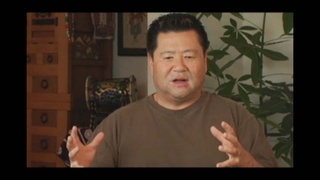Interviews
Taiko, an element that represents strength (Spanish)
(Spanish) In truth, we use diverse elements. Taiko is the most representative, and within our dance [style] the taiko represents strength because there are another two elements, apart from others that are, for example, the shimedaiko and the paranku. In the case of paranku, generally the girls do it, basically the girls do it, and the paranku basically [reflects] grace, agility, grace; while the shimedaiko is a combination of both elements. The shimedaiko is an intermediate point, combining agility and strength, [while] the men usually do the shimedaiko. Therefore, one has the confluence of three elements, [starting] from strength [and] passing through the shimedaiko in a combination of the two until we arrive at grace.
Date: September 14, 2007
Location: Lima, Peru
Interviewer: Harumi Nako
Contributed by: Asociación Peruano Japonesa (APJ)
Explore More Videos

Introducing Taiko in Vancouver
(b.1951) Co-founder and managing director of San Jose Taiko.

The philosophy of playing Taiko
(b.1951) Co-founder and managing director of San Jose Taiko.

Defining a Taiko player
(b.1951) Co-founder and managing director of San Jose Taiko.

Dancing in Japan as an American, in the US as Japanese
(1918-2023) Nisei Japanese kabuki dancer

Different learning style in Japan and the United States
(1918-2023) Nisei Japanese kabuki dancer

Both Japanese and American identities though Japanese dance
(1918-2023) Nisei Japanese kabuki dancer

Hardship to be a Kabuki dancer as a woman
(1918-2023) Nisei Japanese kabuki dancer

Do my best as a professional dancer
(1918-2023) Nisei Japanese kabuki dancer

Decision between becoming a minister or musician
(b. 1949) Musician and arts educator and adminstrator.

Starting Japanese American taiko their own way
(b. 1949) Musician and arts educator and adminstrator.

Japanese American taiko is not Japanese taiko
(b. 1949) Musician and arts educator and adminstrator.


Parents didn't accept me playing taiko in the beginning
(b. 1949) Musician and arts educator and adminstrator.

Performing the koto and taiko drum together, in Japan
(b. 1949) Musician and arts educator and adminstrator.

Taiko considered "Jazz" in the Philippines
(b. 1949) Musician and arts educator and adminstrator.
